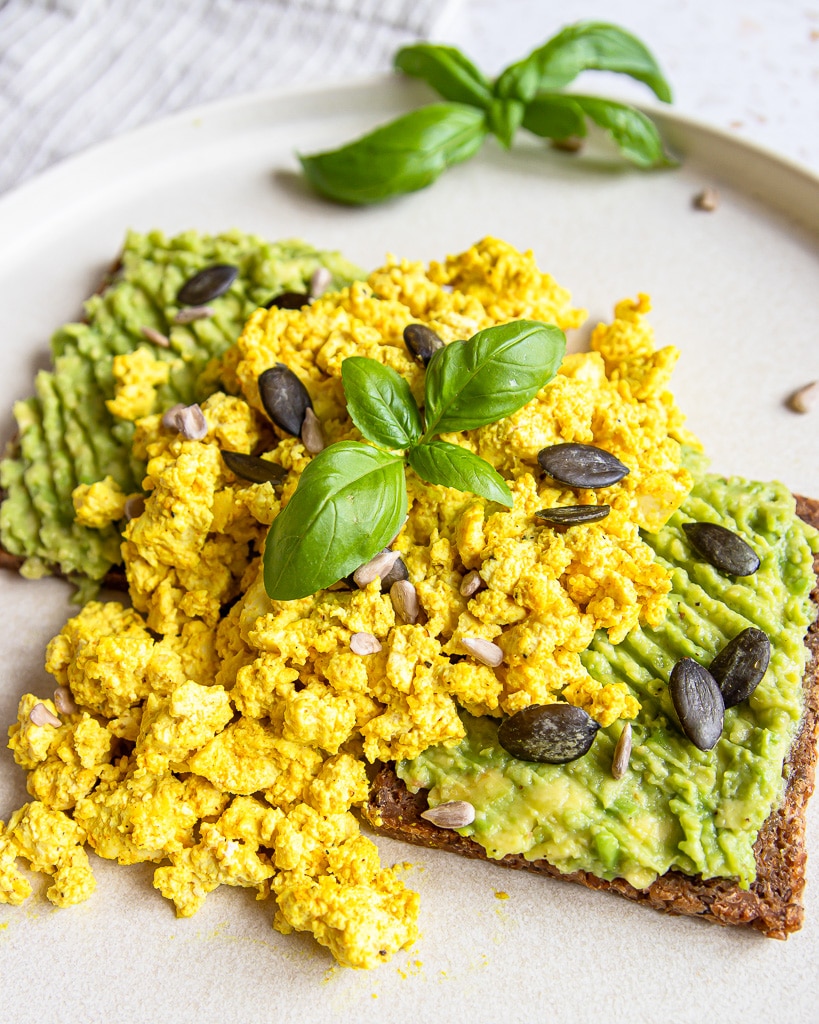Did you know that most of your daily energy is used just to keep you alive, even while you sleep? In this article, we will explore how we really spend our energy throughout the day, with insights into our basal metabolic rate, digestion, and physical activity.
We’ll dive into three key parts:
- Basal Metabolic Rate (BMR)
- Thermogenesis
- Physical Activity
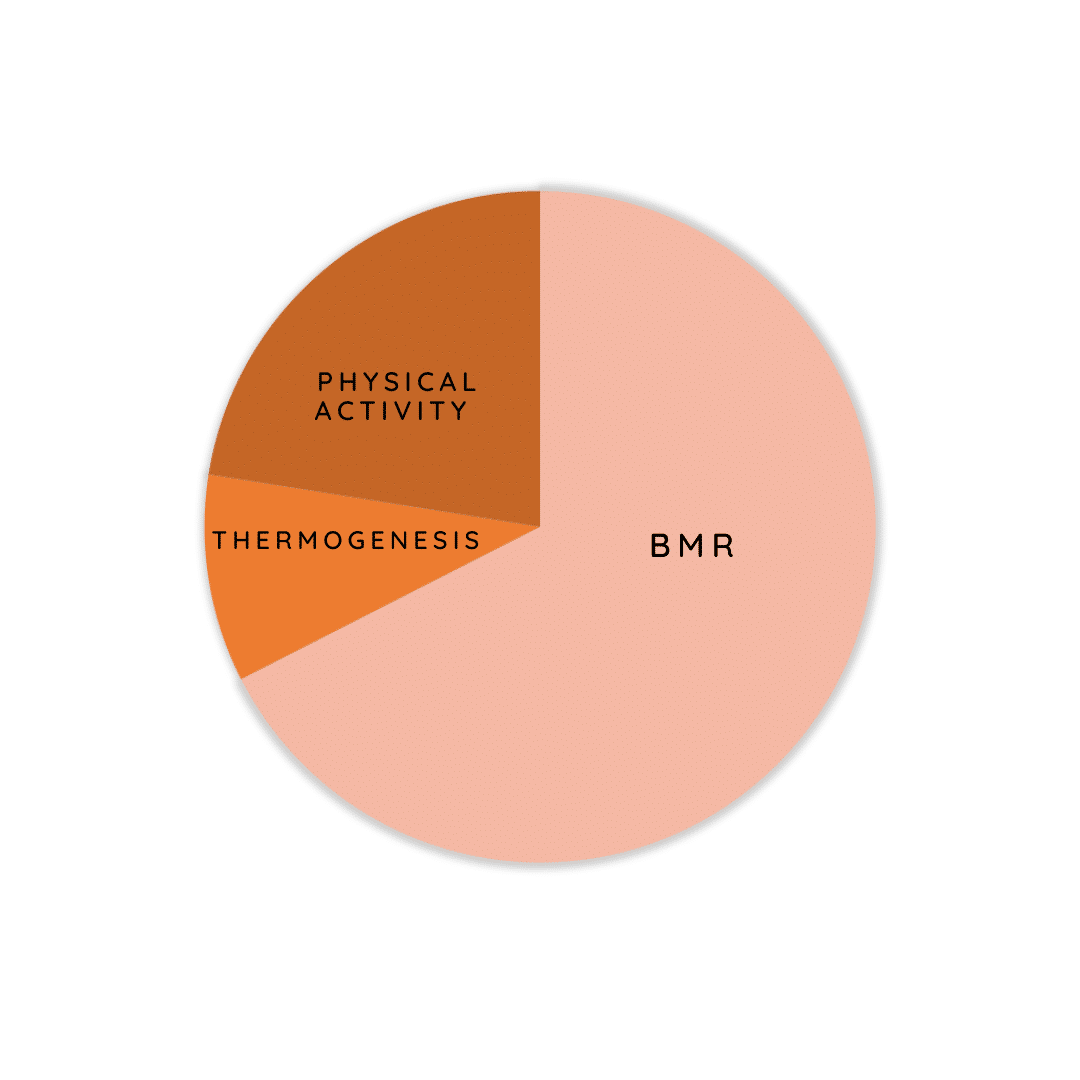
Let’s start with understanding the crucial role of Basal Metabolic Rate (BMR).
Basal Metabolic Rate (BMR)
Maintenance of Basic Functions
Our body is constantly working to keep us alive. These essential processes include our heartbeat, brain function, and respiration. The energy needed to maintain these functions in a state of complete rest and fasting is known as the Basal Metabolic Rate (BMR).
What is BMR?
BMR is the number of calories your body needs to perform basic life-sustaining functions while at rest. It accounts for about 60-75% of our daily energy expenditure. This means even when you’re not moving, your body is using energy to keep you alive and healthy.
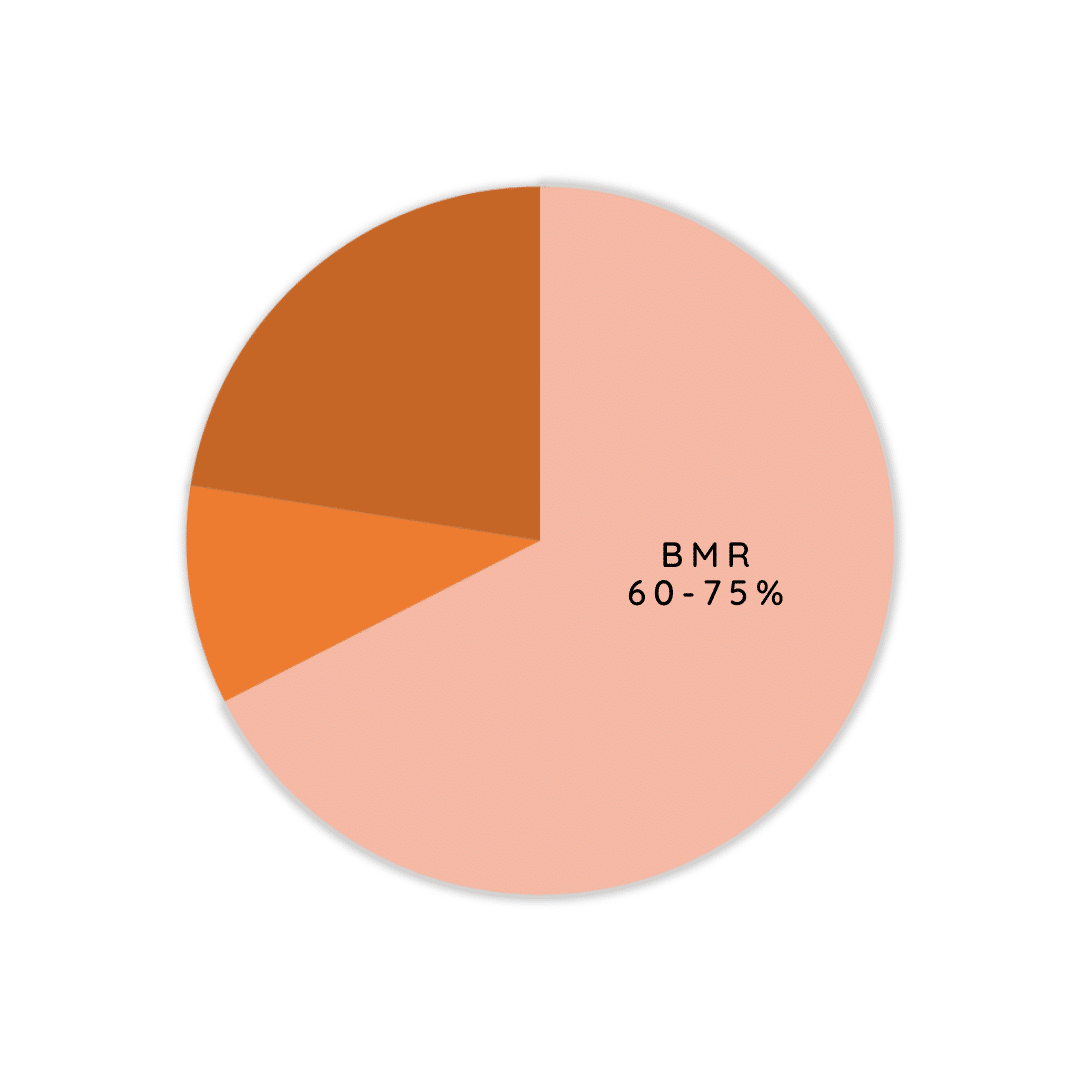
Factors Influencing BMR
BMR varies between individuals and depends largely on lean body mass (body mass minus fat). Here are some key factors:
- Height and Weight: Taller and heavier people typically have a higher BMR.
- Muscle Mass: More muscle increases BMR.
- Age: BMR decreases with age.
- Sex: Generally, males have a higher BMR due to higher muscle mass.
Understanding BMR
BMR can be estimated using various formulas, but a simple way to understand it is to think of it as the minimum number of calories needed to keep your body functioning at rest. For example, functions like breathing, circulating blood, digesting food, and repairing cells all require energy.
Measurement of BMR
Nutritionists (like me) are able to calculate your BMR and evaluate your needs by determining how many calories your body is using. This helps us undestanding your body metabolism and help you reach your goals.
Thermogenesis
What is thermogenesis ?
Thermogenesis is the process by which your body produces heat. This includes the energy your body uses to digest and process the food you eat, known as the Thermic Effect of Food (TEF).
Importance of thermogenesis
About 10% of our daily energy expenditure goes to digesting, absorbing, and metabolizing the nutrients in our food. This process not only helps us extract energy from our food but also plays a role in regulating body temperature.
Factors Influencing Thermogenesis
The amount of energy used in thermogenesis can vary based on the type of food consumed, basically foods that make your body to work harder and using more calories when processing and digesting them :
- Protein-rich Foods: Require more energy to digest compared to fats and carbohydrates. Foods such as lean meats, fish, eggs, and high protein dairy products have a higher TEF.
- Fibrous Vegetables: Vegetables such as broccoli, spinach, and kale are high in fiber and have a high TEF.
- Whole Grains: Brown rice, quinoa, and oats are high in fiber and have a high thermic effect. This is the case for most whole grain foods.
- Some healthy fats: Such as avocados and nuts require lots of energy to digest. These foods have a pretty high TEF.
- Meal Size and Frequency: Larger and more frequent meals can as well increase thermogenesis as your digestion is activated more frequently. This requires your body to use more energy.
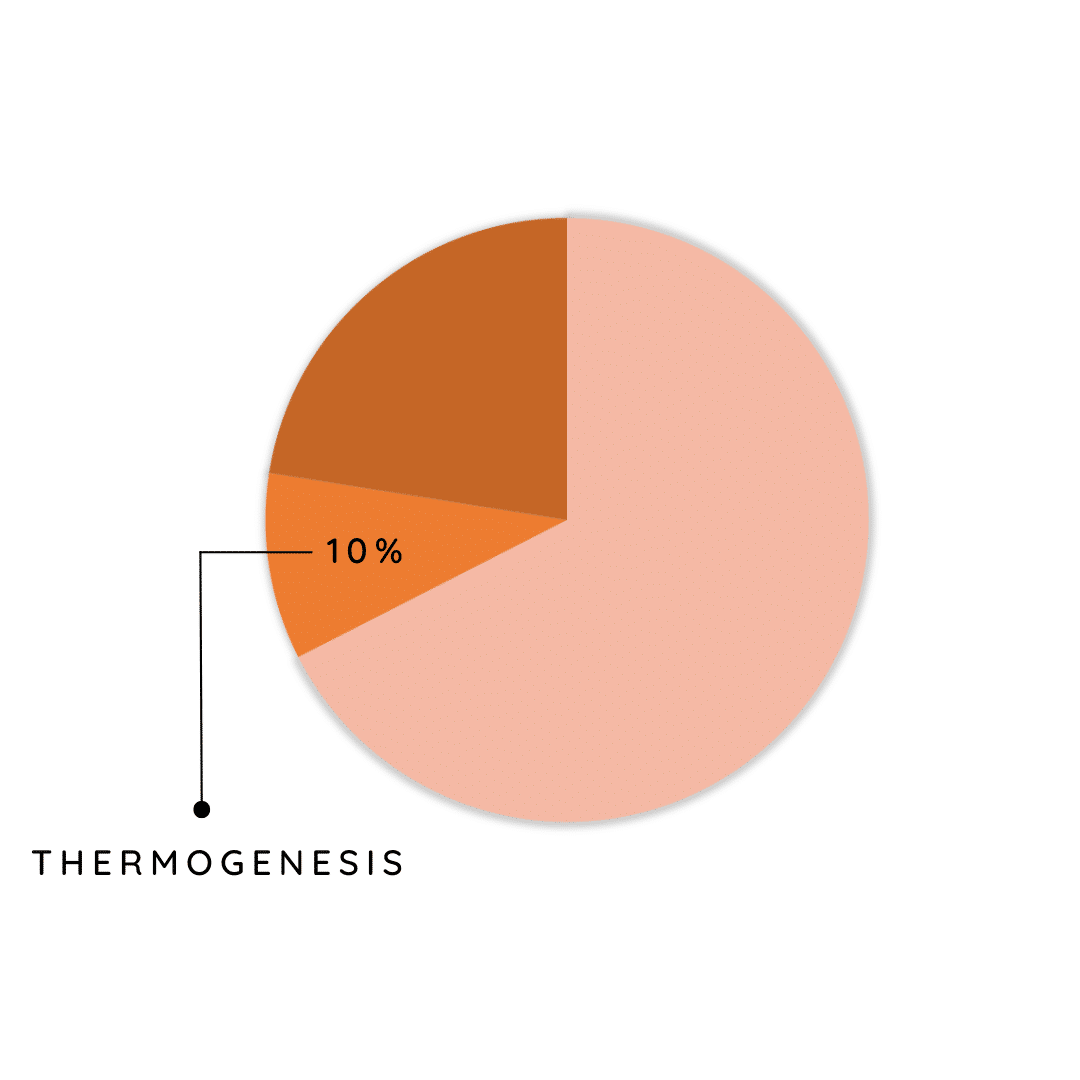
Physical Activity
Moving Throughout the Day
Physical activity includes all the ways you move during the day, from workouts to everyday activities like walking, cleaning, and even being agitated. This makes up about 15-30% of your daily energy use.
This is the most variable data in our daily energy expenditure as we can move a lot if we are a athlete for example or have a very active lifestyle, versus a sedentary routine.
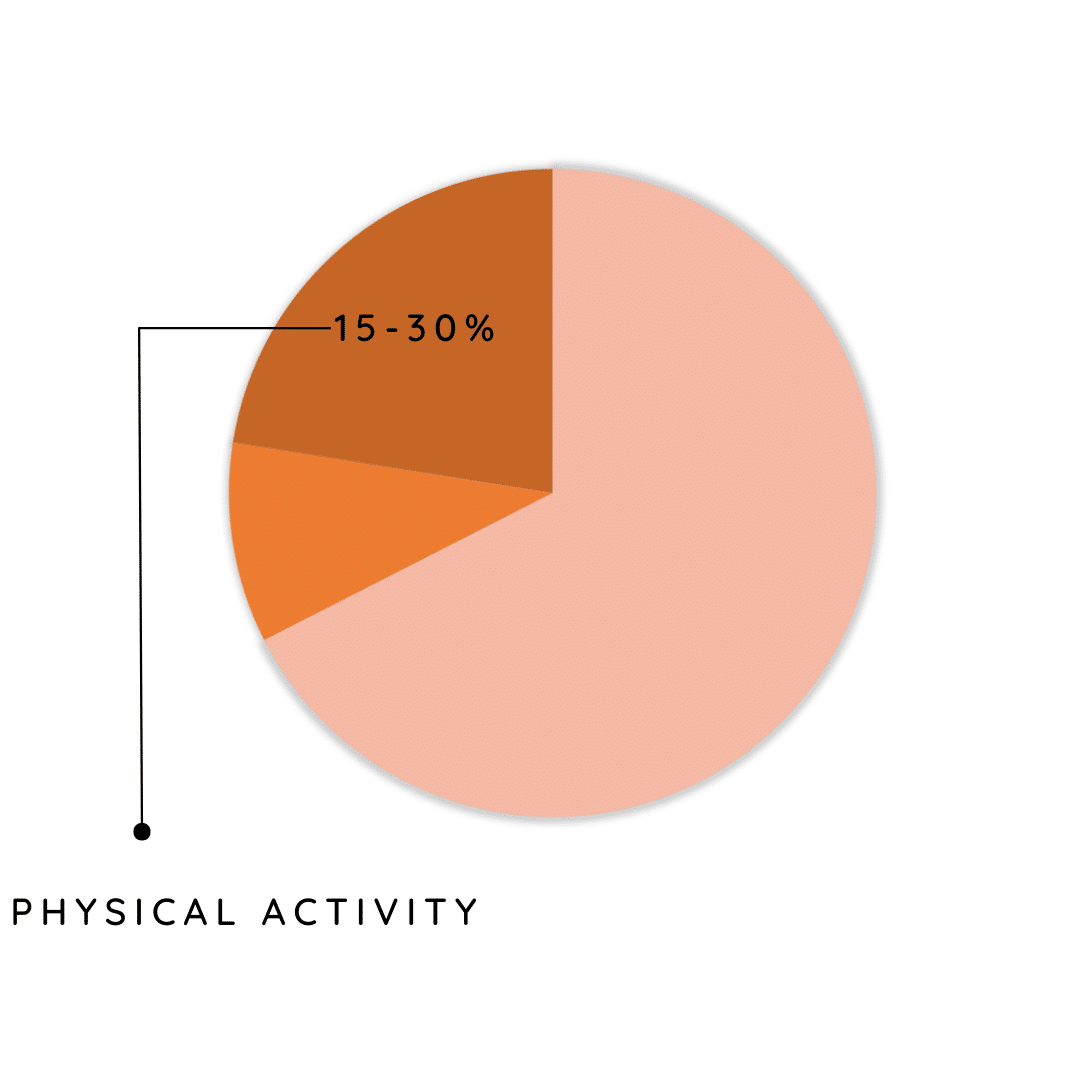
Types of Physical Activity
- Exercise: Structured activities like running, swimming, or hitting the gym.
- Non-Exercise Activity Thermogenesis (NEAT): Everyday activities that aren’t structured exercise, like walking to the store, gardening, or doing housework.
Benefits of physical activity
Practicing a physical activity helps maintain a healthy weight, boosts mood, and reduces the risk of chronic diseases. It’s an important part of our overall energy expenditure and contributes to our well-being.
Importance of Nutrition
Balanced Nutrition
Even if you’re not hitting the gym every day, your body still needs good fuel to function efficiently. Eating a sufficient amount of food and having a balanced nutrition supports your vital functions and fuels physical activity.
Eating Right
Eating a balanced diet rich in fruits, vegetables, whole grains, lean proteins, and healthy fats ensures your body gets the nutrients it needs to perform all its functions. Good nutrition supports energy levels, enhances physical performance, and promotes overall health.
Conclusion
Understanding how our bodies spend energy each day is eye-opening. From the Basal Metabolic Rate (BMR) that keeps our vital functions running, to the Thermogenesis process that is part of digesting food, and finally to the physical activities that vary from structured workouts to everyday movements—each part plays a crucial role in our overall energy expenditure.
By knowing that a significant portion of our energy goes into basic bodily functions, it becomes clear why balanced nutrition is essential, even if we’re not always hitting the gym. Eating well supports our BMR and thermogenesis, providing the fuel our bodies need to function optimally. Moreover, integrating physical activity into our daily routines can boost our energy levels and overall well-being.
Remember, your body is an amazing, hardworking system that requires the right balance of food and activity to keep you feeling your best. Pay attention to your diet and incorporate regular physical activity to see a positive impact on your energy and health. Start making mindful choices today, and you’ll be rewarded with improved vitality and wellness.
This is my first article, I hope you lliked it and I’d love to hear your thoughts!
Let me know how you manage your daily energy expenditure in the comments below. Your feedback and experiences are valuable, I’m excited to bring you more insights and tips based on your input.
Don’t forget to share this article with friends who might find it useful.
♥

